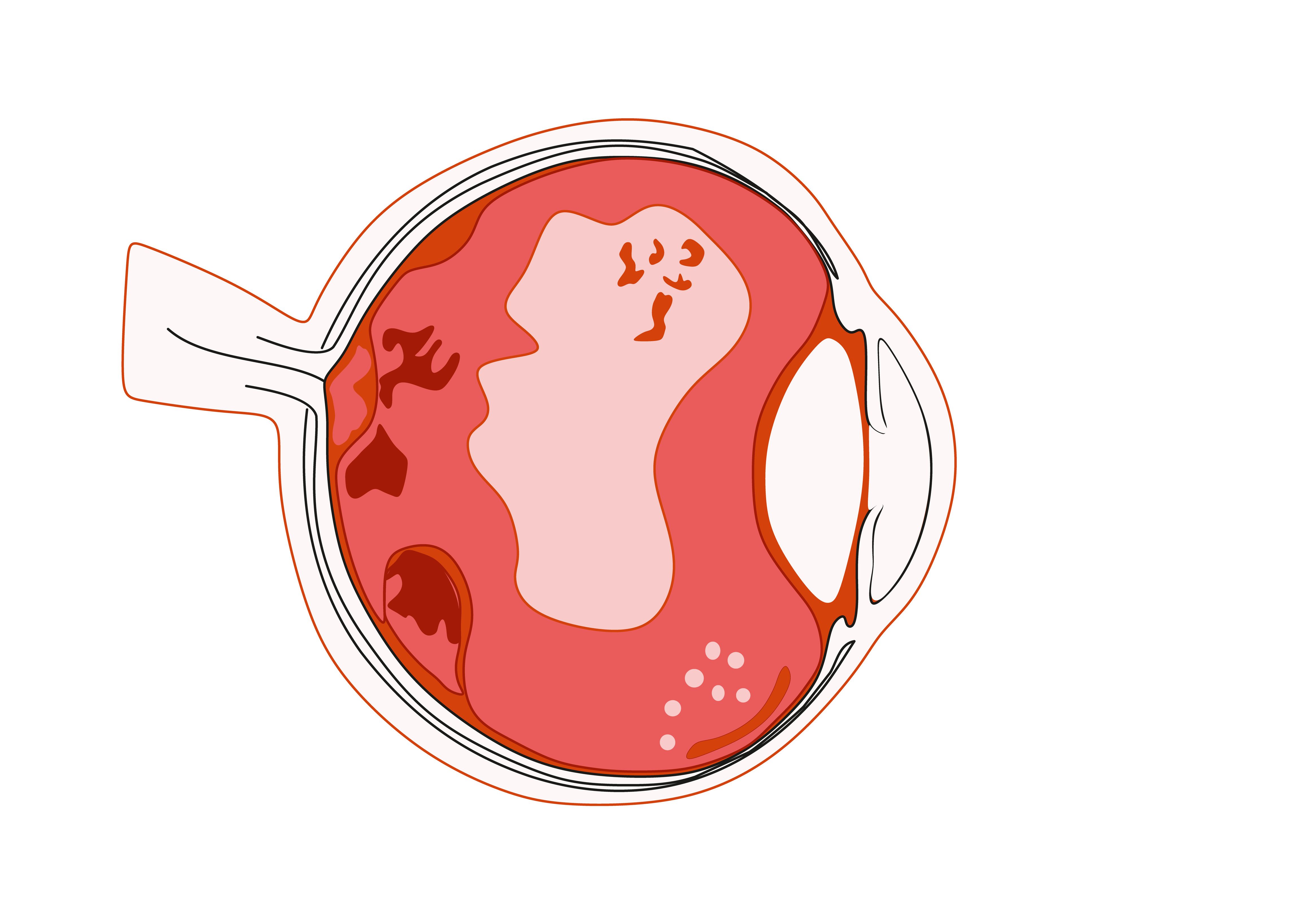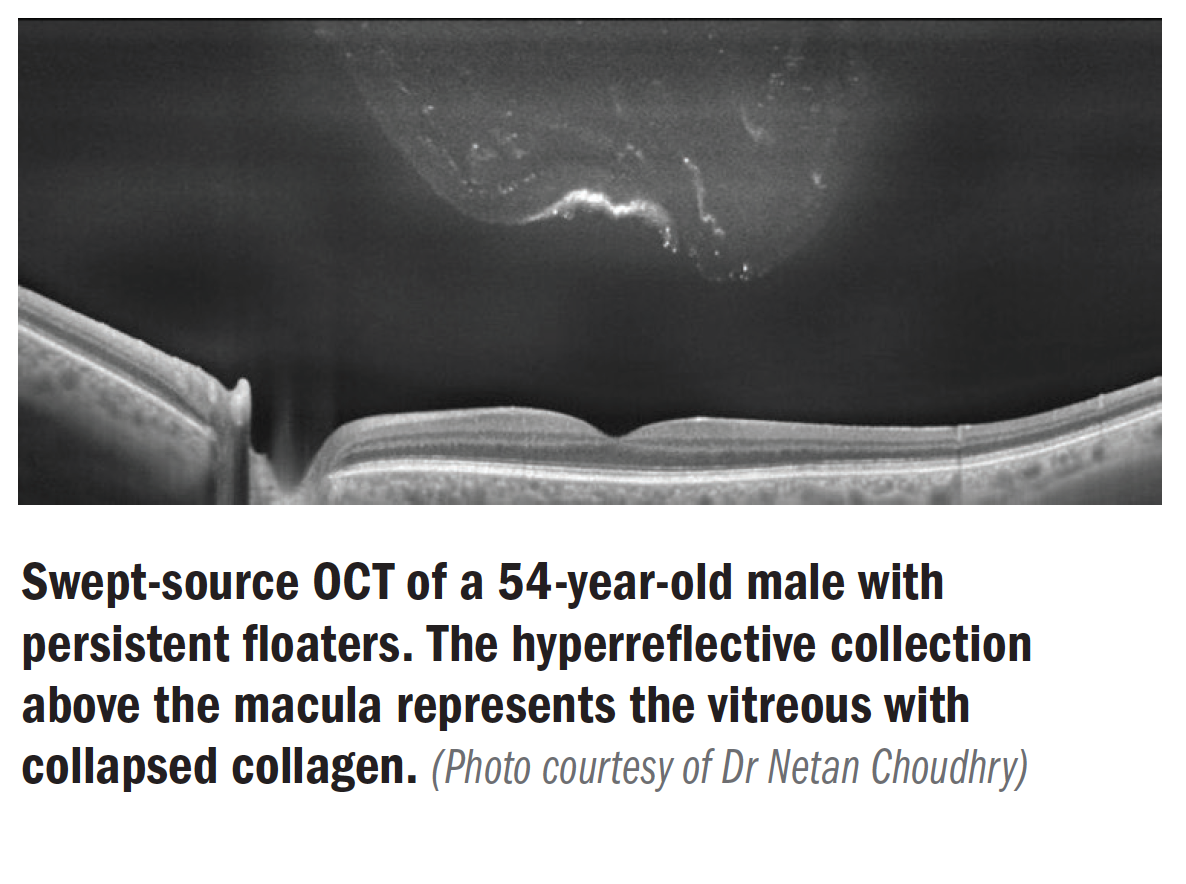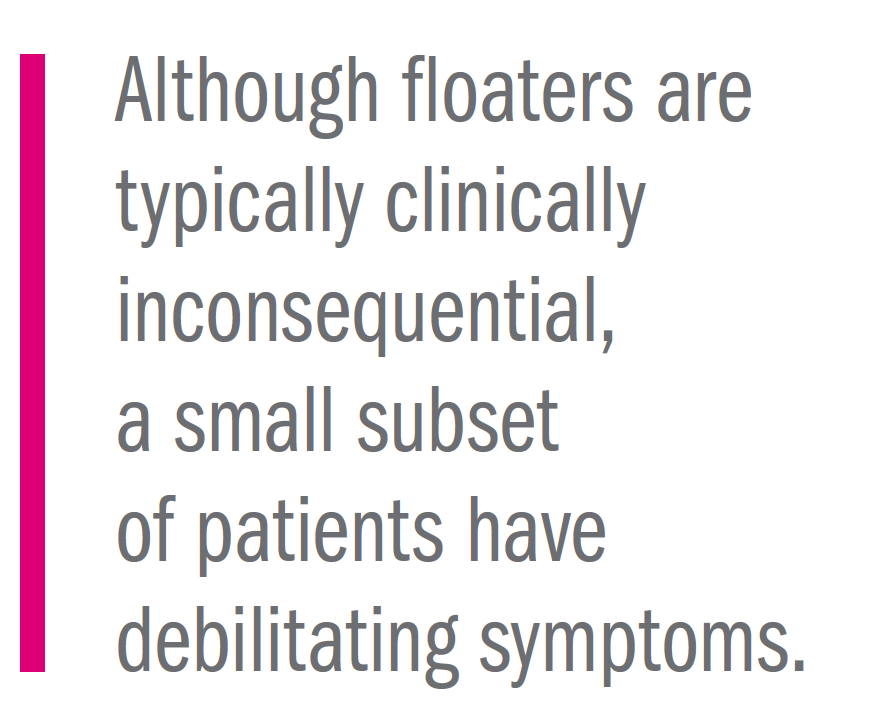Considering YAG vitreolysis for persistent vitreous floaters
Study evaluates the impact of surgical procedure on visual outcomes in patients

This article was reviewed by Netan Choudhry, MD, FRCSC.
YAG laser vitreolysis is a less-invasive option than pars plana vitrectomy for patients who are affected by vitreous opacities (floaters), according to Netan Choudhry, MD, FRCSC, of Vitreous Retina Macula Specialists, Toronto, Canada.
Although floaters are typically clinically inconsequential, a small subset of patients may have debilitating symptoms that interfere with their vision and require treatment.1
During the American Society of Retina Specialists 2020 virtual annual meeting, co-author Collier Jiang, MD, University of Calgary Department of Ophthalmology, presented outcomes from the VOYAGE study evaluating the impact the surgical procedure has on visual outcomes and on optical coherence tomography (OCT) imaging in patients with symptomatic vitreous floaters.

As background, Jiang said few publications exist on the treatment since it is so new, and those that have been published have shown varying degrees of visual function improvement after the procedure.
“Up to this point, we really have not had an objective way of evaluating the opacity, what it looks like, where is it, what it is doing … what the endpoint for treatment is,” Choudhry said.
Study design and results
In the VOYAGE study, 35 patients (mean age 59; 43% female) with symptomatic floaters (n=40 eyes) were treated with YAG laser vitreolysis. All patients had a dilated eye examination to confirm the floaters as well as receiving pre- and post-treatment ultra-widefield imaging.
Best-corrected visual acuity (BCVA) was measured and swept-source OCT conducted prior to and after treatment. Jiang noted that five patients received bilateral YAG laser vitreolysis due to symptomatic vitreous floaters in both eyes.
All treatments were performed by a single surgeon using the Ultra Q Reflex Laser (Ellex) after dilation and anesthesia, using a single mid-vitreous contact lens that was applied to the cornea using GenTeal ointment (Alcon).
“The energy level was initially set for 5 mJ and titrated up to a maximum of 20 mJ to achieve plasma formation with the creation of bubbles and opacity destruction,” Jiang said.
Patients were re-treated if they reported ongoing symptoms during follow-up; 37% of eyes required a second treatment and 35% required a third treatment.

Overall, patients experienced an improvement in mean BCVA after the first YAG treatment compared with baseline (0.14 ±0.20 logMAR units vs 0.11 ±0.20 logMAR units, respectively). However, BCVA was not significantly different after the second and third treatments compared with baseline. Furthermore, just over half of the patients (55%) reported an improvement in their symptoms after their final YAG treatment, Jiang said.
“Overall, this study showed a significant improvement in mean BCVA after the first YAG laser vitreolysis treatment compared with baseline,” he said. “Ninety percent of patients reported resolution of their symptomatic visual disturbance after the final treatment session. There were no retinal detachments or retinal tears.”
Imaging floaters in clinical practice
The VOYAGE study “used a variety of novel imaging techniques to quantify and follow changes in the vitreous opacities,” Jiang said, adding that scanning laser ophthalmoscopy and dynamic OCT visualization were particularly useful tools.
For example, he said that by increasing the gain by 55% to 75% from an unaltered swept-source OCT scan, clinicians are able to view the opacities that were previously unable to be imaged.
Furthermore, “dynamic OCT imaging can capture the movement of the patient’s vitreous in real time and help localize vitreous opacities during treatment,” he said. “OCT can provide useful information. When the depth is increased to 6 mm, we can identify some vitreous opacities that may have been missed with the standard 3 mm depth.”
Carl Regillo, MD, Wills Eye Hospital, led the paper discussion, and noted that about two-thirds of patients needed re-treatments. “Why aren’t we doing this across the board? Most vitreoretinal surgeons are not doing YAG vitreolysis. Is it time consuming? Is it challenging?” he asked.
“These procedures can take some time, probably 10 to 15 minutes,” Choudhry said. “The reason that it was broken up into, on average, two sessions, was because after a certain amount of power was administered to the eye, there was a risk of an increase in IOP. We wanted to limit all complications or [adverse] effects.”
Choudhry elaborated on the unique imaging used, noting that swept-source OCT was vital to “identify the opacities that the patients were complaining about and then titrate the treatment to the endpoint of the disappearance of those opacities, to know that we have hit an endpoint for the therapy.”
In terms of clinical practice implementation and patient selection, he noted that not every patient who has floaters needs treatment.
“I have been doing [YAG vitreolysis] for the past year-and-a-half successfully in the patients [who] really need it,” he said. “Of course, in the world of optics, the definitive result will always be with the complete clearing of the vitreous, but if we can avoid vitrectomy and the small risk
of complication from vitrectomy in those patients [who] are good for this procedure, then why not?” Choudhry did note, however, that vitrectomy is the first and only option for certain opacities of the amorphous variety or multiple diffuse floaters.
Reference
- Ivanova T, Jalil A, Antoniou Y, et al. Vitrectomy for primary symptomatic vitreous opacities: an evidence-based review. Eye (Lond). 2016;30:645-655.
Netan Choudhry, MD, FRCSC
P: +001 647/361-7575
Choudhry has no financial disclosures related to this content.
Newsletter
Keep your retina practice on the forefront—subscribe for expert analysis and emerging trends in retinal disease management.